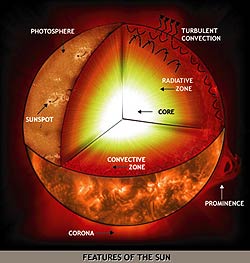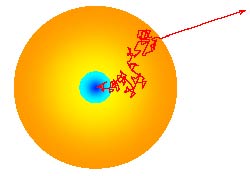台灣中學教育,最大的問題在:超時間上課、超多的必修課,更嚴重的是,幾乎大部分課程的老師,都習慣用紙筆測驗來考核學生。有的高中,連體育課都會出一些令人無法置信的考題,和鼓勵學生運動、欣賞運動的本意,大相逕庭。
圖 1 科學 Science 期刊學習與科學分析關連的分析圖表。註一。
|
2009 年科學期刊 Science,刊載一篇論文。作者分析中國(China 紅色)和美國(USA 藍色)高中畢業生,剛進大學時,對高中物理學習成就的評量結果。圖示為三種測試的分析圖:FCI(力學)、BEMA(電磁學)、LCTSR(科學分析)。
美國高中生大部分沒修過電磁學,因此評量的結果,顯示絕大多數學生都是用猜的。中國高中生,明顯的在力學和電磁學的評量上,表現的比美國的高中生要強許多。力學是傳統高中物理的重點,結果也反應一般亞洲中學生的訓練模式。亞裔學生通常很會計算,尤其是力學題目。
科學分析能力,雖然和以後的創造力,不一定有絕對關係,但是一般認為,這個評量結果和創造力較有相關性。這個測試的結果,相當有啟發性。不管高中生在力學或電磁學的紙筆測驗訓練,是否有明顯差異,其可能真正有用的學習成效,或者我們常稱為帶得走的能力,並沒有太大的差異。
表 1:台北美國學校相當於我們國一和國二年紀學生的課表。
|
警訊:美國的高中比較好玩、台灣的大學比較好玩
圖2:美國一般高中四年內要修滿20個卡內基單位。一個卡內基單位相當於於120 小時(45分鐘)課。換算成我們的高中模式,相當於每學期要修滿300小時課,或者每周16到17小時的課。台灣一般高中生一周要上 40小時上下的課,負擔約為美國學生的兩倍以上。
|
唯一不同的是,美國高中生必修課約為我們的一半,學期時間比我們短,每日上課時數也比我們少。而且相當明顯的,高中生活過得比一般亞洲高中生來得愉快。造成這個令人意外,或者不算是意外的原因,應該是我們的學生,被要求修太多知識性的課程,卻沒有預留充分的時間,讓學生可以消化、吸收,再轉化成可以帶得走的能力。
網路上有一段影片,其中有一段學生的評語:美國的高中比較好玩、台灣的大學比較好玩,很值得教育工作者,仔細考量。我們把學生當超人磨練,太過疲勞,成效明顯不夠理想,辛苦的代價卻是讓人難以置信。
表 3 清華大學多元入學管道學生學業成績表現分析表。註二。
|
繁星優於推甄,推甄優於靠指考成績入學的學生
清華大學是國內第一個推動高中社區化的大學。清華利用增加繁星計畫招生模式,讓偏鄉與社區高中的學生,有另一個進入清華大學的管道,也間接推動高中社區化的腳步。清華推動繁星計畫的原始初衷,是效法美國常春藤盟校的招生模式,讓弱勢族群學生有特別的管道與機會進入常春藤盟校,讓學校的菁英學生有機會接觸更多元的族群,更多元的文化。這樣教育出來的學生,以後成為領袖人物時,才會有更多元的視野與胸懷。如此,才有可能真正成為所有人群的領袖。
清華推動繁星之後,意外地在很多偏鄉爭取到優秀的學生,讓其他大學起而效尤。隨後,教育部將繁星當成工作重點後,有十餘所大學開始跟進。清華更是追蹤幾年下來,繁星、推薦、申請與指考等不同管道入學的學生,在大學時期的學業成就表現。隨後中一中郭伯嘉校長,分析從繁星管道升學的學生,進入這幾所大學後的學業表現,也得到類似的結論。
|
表 4 清華繁星入學學生區域分布資料表。
|
一般而言,學業表現繁星優於推甄學生,推甄學生優於指考學生。
表 5 教育部接辦繁星計畫後,第一屆各大學錄取學生大一上學業成績表現統計表。註三。
|
讀得越少,表現越好?
很多人擔心學生學測考完,高三等於沒有讀,這樣上了大學會有銜接上的困難。結果顯示,恰好相反。越早確定可以進入大學的學生,進入大學以後的表現反而越好。這個結果其實和科學期刊的分析結果一致。
學得多,並不代表學得好,也不代表學生有學到帶得走的能力。
這個結果正好反應,我們的學生被要求太多,教學流於強記、反覆演練,學生缺少深入思考與學習的機會。越早升學的學生,越早進入沒有升學壓力的模式學習,而且證據顯示,上了大學後的學習態度,可能才是學習成就表現的優劣關鍵。
99課綱在制定的過程,也充分反應大家對這一塊的認知,缺乏深刻的認識。學生已經長期在腦疲乏的狀況下學習,還有很多新科目要學生生吞活剝。每樣都學,結果就是每樣都不行。真正的人才,早早的就在這樣的教育模式下被犧牲淘汰掉。
我們需要的是可以解決問題的研究人員,一個問題可能需要一晚、一個月、一年、十年甚至一輩子才有辦法得到進展,但是現下的要求卻是:2 分鐘解一道題目。你除了要是長跑選手,才可以應付將來研究或人生的需求,更需要是一個不錯的短跑選手,用來在升學競爭中求生存。
這樣的教育顯然不是我們需要的。
繁星計畫有意或無意間,推動教學正常化。也推動高中社區化。更重要的是,他提醒大多數教育工作者,一個很重要的現象:社區高中對教育的有著高效益的正面功能。
高中升學免試,國中教學才能正常化
國中免試升學,經過很多年的蛻變,在九年一貫課程與一綱多本的配合下,將教材的編寫與選擇權,還給第一線的小學老師之後,這些年我們終於看到小學課堂上出現活化、適性的教導,學生明顯的在課堂上有了活潑生動的學習與互動。
高中升學需要真正的免試,輔以適當的配套措施,讓國中的老師配合不同學生的需求上課,才有辦法解決痛苦和沒有效率的學習模式。
大學入學方式也要改革
接下來當然就是大學也要配合,讓高中生學得更幸福、更有效率。比方說,現在所有大學馬上可以做的就是:一半以上推甄的學生,可以直接用書面審查同意入學,一些可能需要當面面試的學生,應當是由學校出錢邀請學生到校面談。
畢竟,想要收到好學生的是大學,這也是一般美國大學的入學模式。流於形式的大規模面試,大學老師也人仰馬翻,考生更是疲於奔命。明明招不到學生的學校,也可以忘掉現在是學生市場的本質,實在對教育實效不會有太大幫助。
清華周懷樸教授就曾語重心長的表示,美國可以審慎的改善書面的入學審查方式,我們難道不能嗎?一定要沒有效率的讓所有師生,都手忙腳亂的做完這些工作?
有子弟就讀高中的家庭,失去自由遷徙的自由
高中社區化和真正的免試升學,還有一個對社會最大的正面效應。萬一家長需要轉換工作場所,比較不會面臨小孩子無法跟著移動的窘境。
12年國教,最基本的配套措施:每個社區都要有一所高中
很多大學都希望有自已的附中、附小,就近解決老師、職員子女的就學問題。現在配合12 年國教的推動,與高中社區化,教育部實在可以挹注經費,讓各地區的大學就近接收附近的高中,更多的大學附中,應該有助於附近學生就近就學的意願,也可以順便解決各大學教職員子女的就學問題。只要經費無虞,相信各大學配合的意願應該不小。(註四)
沒有大學支援的社區中學,教育部需要更多經費的補助。相信最終,明星高中會慢慢走向社區化。就像台北市現在仍然有所謂的明星國中,但是不是所有家長,都會不辭(學生的)辛勞,把小孩子越區送到這些明星國中。
不同的家長會對選擇學校,有不同的認知。但是,最終,絕大多數的家長還是會選擇社區附近的學校,讓子弟就近就讀。
交大物理所 高文芳
後記:
註一:Science 圖1出自:Science, 29 Jan. 2009, 586-587, 包雷等人的論文。 是99物理課綱召集人,台大物理系高涌泉教授,在一次會議中告知筆者。筆者也是99物理課綱委員成員之一。Science: "Learning and Scientific Reasoning", Bao et al., 323-5914, 586-587, 01/30/2009. PDF。
註二:國內的統計圖表,出自清華大學周懷樸教授在2012年初,全國家長團體聯盟彰化年會,會前研討會的演講搞。詳見:研討會清大周懷樸教授多元入學方案講稿。
註三:中一中校長郭伯嘉受教育部委託,統計分析教育部接辦繁星計畫後,第一屆各大學錄取學生大一上學業成績表現。
*這些圖表當然有在進一步分析、了解的必要。但是,西方教育的長效結果,可能可以懷疑的地方不多。讓學生快樂和讓學生有成就,應該不是魚與熊掌。
*想進牛津大學物理系大學部要考這個測驗。 測驗時間 2小時,數學11題、物理14題。值得注意的是,這些題目難度相當於我們所謂的中偏易,卻可測出學生學習深度的考題。
註四:2001年秋,新竹市建功國小郭校長在家長會表示,希望交大能認養建功國小。雖然認養的定義有待釐清,我還是在交大的校規會提案,要求學校成立一個交大附中工作小組。當時張俊彥校長,責成教務長林振德負責這個小組的運作。沒多久,當時的工學院院長劉增豐,見到當時的新竹市長林政則時,就向市長表達交大的意願。劉增豐回來轉達市長的反應:請交大挑選兩個小學,一個中學,新竹市願意讓交大接收。
後來由於種種因素,交大沒有進一步動作。當時的市長,後來還是很積極的當成大事推動。原先希望交大接收建功高中的棋,最後轉換成希望清華接收建功高中,交大接收光武國中。但是多年下來,還是沒有多大進展。
其實,最主要的困難還是卡到經費來源。新竹市希望少掉一些學校的經濟負擔,又可以在新竹市多一兩所交大附中與清華附中,大學這邊還是擔心教育部的經費來源,能否有長遠的承諾。
註五:現下高中生不喜歡考指考,原因相當複雜。多半學生在學測失常後,只要有還可以接受的學校可以念,就會拒絕參加酷暑的指考。風習所致,參加指考的學生,除了少數力拼第一志願的考生外,整體而言,很可能原本學習成就,就比已經確定可以入學的考生來得不夠理想。
繁星原本設計給偏鄉、社區高中另闢升學管道的機會,最後因為各大學仍將明星高中學生納入考量,所以也有不少原本就是明星高中,高成就的學生入列。有的人認為,這或許也會影響各種統計數字的真正意義。


